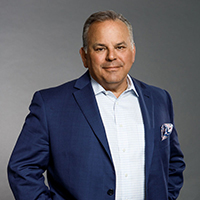January 2, 2019
By Gary Brooks, CMO, Syncron
For the manufacturing industry in particular, the growing gap between customer expectations and after-sales service realities has pushed manufacturers into major renovations to their businesses and, ultimately, the shift to servitization. This shift, where manufacturers must evolve from selling their products outright to selling the outcome or value that products deliver and guarantee maximized product uptime, means focusing more on repair prevention instead of retroactively fixing product failures once they’ve happened, or repair execution or break-fix.
The retroactive, break-fix model of manufacturing has virtually been the way the industry has operated since day one. This, of course, means that a complete overhaul – or even just a partial shift – away from the break-fix model cannot occur overnight, given how ingrained it is within each aspect of a manufacturer’s business. In addition, making such a large shift in business operations comes at a significant upfront investment — including paying for technology costs, retraining employees, hiring and more — that may not be especially attractive in the immediate term. So, getting buy-in from the boardroom level can be challenging. However, the benefits of servitization are quite attractive once the shift is made.
I recently had a chance to chat with several service experts about what companies must do to hit the ground running to make the switch over to servitization. Below are a few key takeaways from my conversations:
Traditional, break-fix service business models were intentionally designed to fail at some time during their lifecycle. This model created opportunities for manufacturers to sell high-margin parts and service, which worked initially because the responsibility of the repair (i.e. maintenance and uptime) fell on the customer. But that model won’t cut it anymore in today’s always-connected world, where customers are demanding a change.
In an industry that has been coping with uncertainty for several years, the space is ripe for innovation and to drive results. With servitization, manufacturers can modernize their operations, and align themselves better with customer expectations and needs. Moreover, it simply delivers better results for customers and helps them drive revenue and growth in return.
Each year presents new opportunities for manufacturers, and it’s always interesting to see how things materialize. 2019 will be no different, and it will be intriguing to see which companies adopt servitization and who wins the race.
For an extended look at predictions on servitization from around the industry, please feel free to download Syncron’s newest “2019 After-Sales Service Predictions” eBook.
 About the Author
About the Author
As Chief Marketing Officer at Syncron, Gary Brooks is responsible for global marketing and focuses on enabling leading manufacturers around the world transform their after-sales service operations to maximize product uptime.
In this episode, I sat down with Beejan Giga, Director | Partner and Caleb Emerson, Senior Results Manager at Carpedia International. We discussed the insights behind their recent Industry Today article, “Thinking Three Moves Ahead” and together we explored how manufacturers can plan more strategically, align with their suppliers, and build the operational discipline needed to support intentional, sustainable growth. It was a conversation packed with practical perspectives on navigating a fast-changing industry landscape.